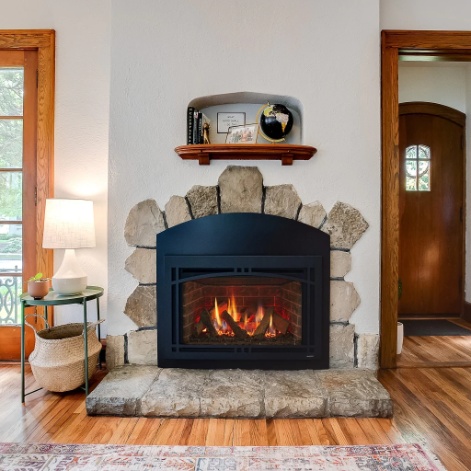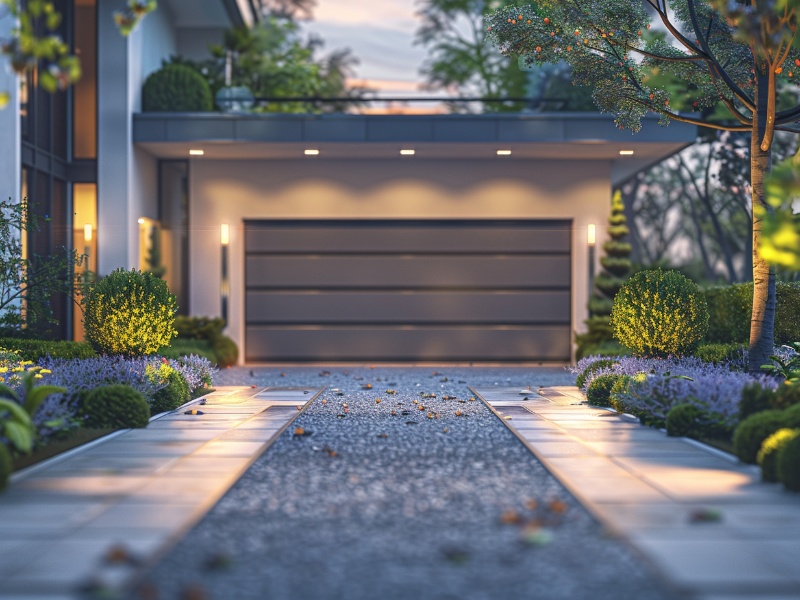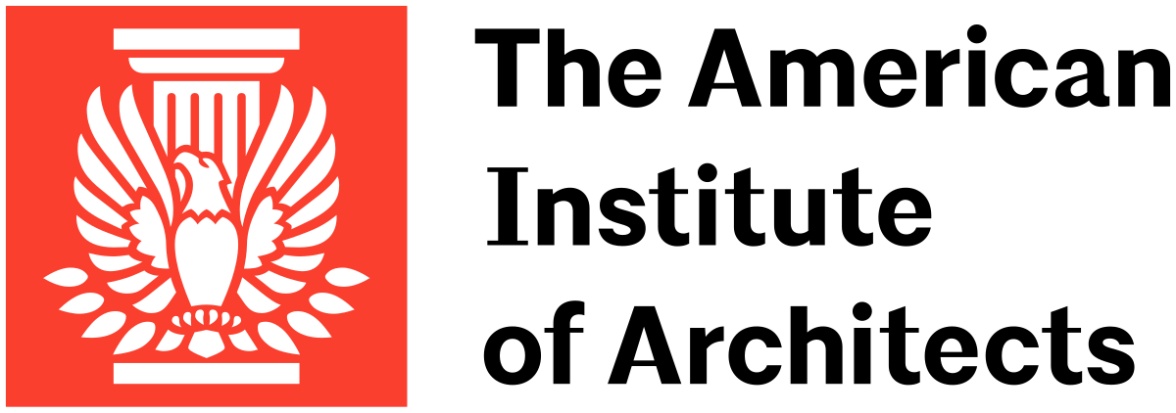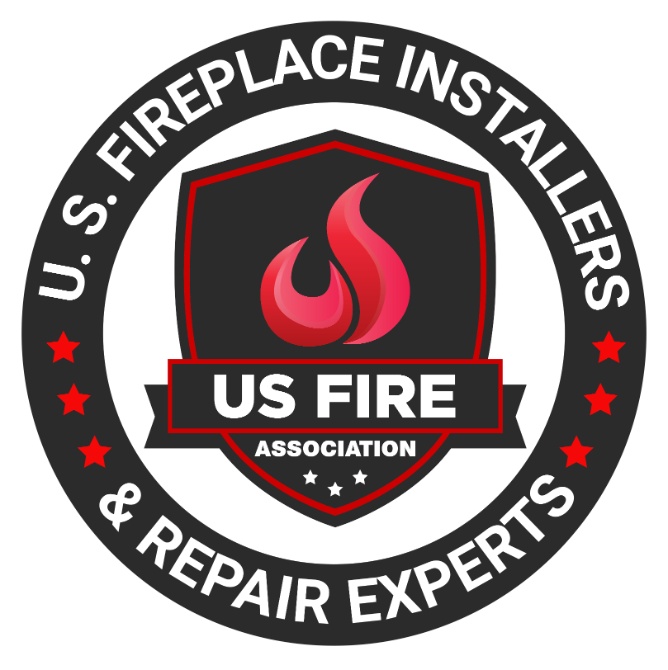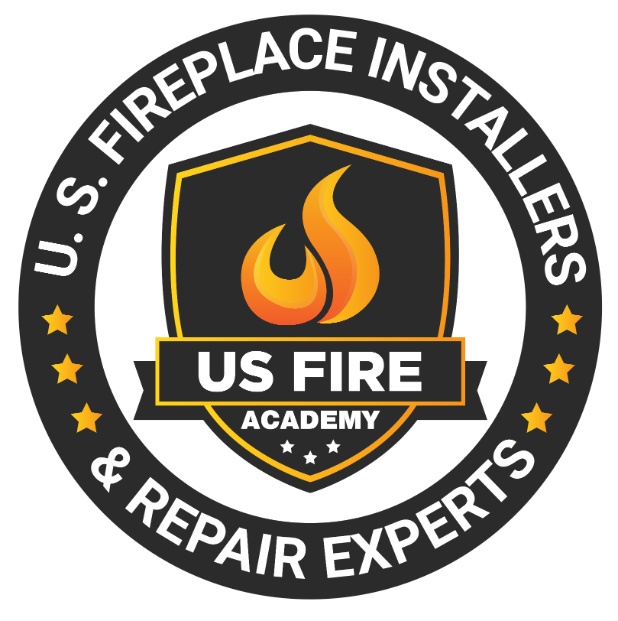Table of Contents
If you own a home with a chimney, understanding the process of repointing is essential.
This crucial maintenance task protects your home’s structure and enhances its aesthetic appeal.
In this article, we will discuss the significance of repointing a chimney, signs that indicate when it needs repointing, how to prepare for the task, the required tools and safety precautions, a step-by-step guide for repointing, the frequency at which it should be done, and the benefits it offers.
Let’s delve into the details and learn more about the process of repointing a chimney.
What Is Repointing a Chimney?
Repointing a chimney refers to renewing the external part of the mortar joint between masonry units, such as bricks.
This essential maintenance task includes removing deteriorated mortar and replacing it with new mortar to protect the structural integrity and weather resistance of the chimney.
By restoring the mortar joints through repointing, the functionality of the chimney improves, and its aesthetic appeal is enhanced.
Skilled artisans carefully assess the condition of the existing mortar, choosing the appropriate type and color of mortar to seamlessly blend with the original masonry.
The craftsmanship involved in repointing ensures that the chimney maintains its historical characteristics while being strengthened against environmental elements.
Preserving the chimney in this manner contributes to the longevity of the entire masonry structure, preventing potential water damage and decay.
Why Is Repointing a Chimney Important?
Repointing a chimney is crucial for protecting your home’s structure and preserving the masonry’s integrity.
This maintenance task maintains solid mortar joints, ensuring weather resistance and preventing water damage.
In turn, this extends the chimney’s lifespan and safeguards the property.
This process enhances the home’s aesthetic appeal and plays a significant role in preventing potential structural issues.
Regular repointing helps keep moisture out, preventing cracks and deterioration that could compromise the chimney’s stability.
By promptly addressing any wear and tear, homeowners proactively safeguard their investment and ensure the chimney remains a sturdy and reliable part of the home’s infrastructure.
What Are the Signs That Your Chimney Needs Repointing?
Indications that a chimney may need repointing include visible cracks in the mortar joints, mortar deterioration, and loose bricks.
If you observe these issues during a thorough inspection, it is recommended to seek assistance from a professional contractor for repointing services.
Alternatively, consider a do-it-yourself approach if you possess the necessary skills.
Repointing is crucial for maintaining the structural stability of a chimney and preventing water penetration, which can lead to expensive damage over time.
Cracked mortar joints impact the visual appeal of a chimney and can result in further decay if left unattended.
Loose bricks pose a safety hazard as they have the potential to dislodge and fall.
Expert chimney inspectors have the knowledge to evaluate the extent of the damage and suggest the appropriate repointing solution.
For individuals proficient in masonry work and confident in their abilities, undertaking minor repointing tasks independently can be a cost-efficient alternative.
How to Prepare for Repointing a Chimney?
Ahead of repointing a chimney, adequate preparation is essential.
This involves gathering the necessary tools, familiarizing yourself with repointing techniques, and implementing proper safety precautions.
Whether you choose to hire a professional contractor or tackle the project DIY-style, thorough preparation is crucial for a successful repointing endeavor.
The initial step in the process is securing the appropriate tools.
Tools such as a trowel, mortar mix, safety goggles, and a ladder are critical for the job.
Understanding repointing techniques includes knowledge of removing deteriorated mortar, preparing new mortar, and effectively applying it to the joints.
Safety measures, such as wearing protective gear, ensuring a stable working platform, and inspecting the chimney for any structural weaknesses, are vital elements to consider.
By emphasizing these preparatory steps, both professionals and DIY enthusiasts can establish a reliable foundation for a successful chimney repointing project.
What Tools Do You Need for Repointing a Chimney?
The necessary tools for repointing a chimney typically include tuckpointing tools, mortar mix, safety equipment like goggles and gloves, and pointing tools such as a trowel and mason’s brush.
These tools are essential for the proper removal of old mortar and the application of new mortar during the repointing process.
Tuckpointing tools are crucial for meticulously removing deteriorated mortar joints, ensuring a clean and precise finish.
The mortar mix, combined with water to achieve the correct consistency, acts as the adhesive that binds the bricks or stones together.
Safety gear like goggles and gloves are vital for protecting your eyes and hands from potential injuries while carrying out the repair work.
Utilizing a trowel aids in spreading and smoothing the mortar mix, while a mason’s brush is useful for adding final touches and seamlessly blending the new mortar with the existing structure.
What Safety Precautions Should You Take?
During chimney repointing, it is important to follow critical safety precautions.
Wear suitable safety gear like goggles and gloves to protect against mortar dust.
Additionally, ensuring stable working conditions, especially in adverse weather, is crucial.
Be aware of possible safety hazards and take proactive measures to prevent accidents during the repointing process.
It is recommended to check the stability of the scaffolding or ladders used for access and ensure they are secure before commencing work.
Taking regular breaks to prevent fatigue and maintain focus is advisable.
Keeping the work area clear of debris and clutter can help reduce trip and fall risks.
Having a first aid kit on site and understanding how to use it can be vital in case of minor injuries.
By following these safety guidelines, you can create a secure working environment for tasks related to chimney repointing.
Step-by-Step Guide for Repointing a Chimney
The process for repointing a chimney consists of several steps:
- Inspecting the chimney
- Preparing the work area
- Removing old mortar
- Mixing new mortar
- Applying the new mortar
- Finishing the joints
- Completing the cleanup
This methodical approach effectively maintains, repairs, and restores the chimney’s masonry while improving its waterproofing and sealing capabilities.
It is essential to start by carefully examining the chimney for any existing damage, such as cracks or loose bricks, before moving forward with the repointing process.
Creating a clean and organized workspace is crucial to ensure smooth operations.
Removing the old mortar requires patience and precision to prevent any further damage to the structure.
When mixing the new mortar, achieving the correct consistency is crucial for a long-lasting finish.
Proper application of the new mortar and precise finishing of the joints are important for maintaining the chimney’s structural stability and preventing water infiltration.
Thorough cleanup not only enhances the visual appearance but also removes debris that could compromise the chimney’s integrity over time.
Step 1: Inspect the Chimney
The first step in repointing a chimney involves conducting a comprehensive inspection of both the exterior and interior components.
It is recommended to hire a professional contractor for a thorough chimney inspection to identify potential damage and prioritize effective prevention strategies.
By carefully examining the outer structure for signs of cracking, weathering, or loose bricks, and the inner lining for creosote buildup or structural issues, any underlying problems can be identified before beginning the repointing process.
Neglecting this essential initial assessment could lead to overlooking hidden issues that may worsen over time, potentially compromising the structural integrity and safety of the chimney.
Therefore, investing in a professional evaluation is crucial to ensure a successful and long-lasting repointing project.
Step 2: Prepare the Work Area
The preparation for chimney repointing involves tasks such as setting up secure scaffolding for safe access, protecting surrounding assets from debris, and seeking guidance from experts on restoration techniques.
Creating a suitable workspace is important for the success of a repointing project.
Ensuring that the scaffolding is stable and correctly assembled is crucial to prevent accidents while carrying out the restoration work.
Covering any valuable items nearby with protective sheeting helps shield them from dust and potential damage.
Expert advice is essential in choosing the appropriate materials and methods for the repointing task, increasing efficiency and ensuring durable outcomes.
By carefully preparing the work area in this manner, you set the stage for a smoother and more effective chimney restoration project.
Step 3: Remove Old Mortar
The process of removing old mortar during chimney repointing involves carefully extracting deteriorated mortar from the joints to ensure precise brick repair and maintenance.
This meticulous step enhances the chimney’s aesthetics and contributes to maintaining the property’s overall value.
By removing old and crumbling mortar, the structural integrity of the chimney is significantly reinforced, preventing water penetration and potential damage to the bricks.
Proper repointing seals any gaps that could allow moisture to seep in and helps prevent further deterioration, prolonging the lifespan of the chimney.
This attention to detail during repointing enhances the curb appeal of the property and safeguards against costly repairs in the future.
Step 4: Mix New Mortar
The process of mixing new mortar for chimney repointing includes blending mortar mix with water to achieve the desired consistency.
This ensures the conservation of materials and captures the rustic charm of masonry.
Additionally, adding design elements for energy efficiency can enhance the visual appeal and functional aspects of the restored chimney.
This process restores the structural integrity of the chimney and provides an opportunity to incorporate modern technology for improved efficiency.
By including insulation materials and optimizing airflow, the repointed chimney can contribute to energy savings and sustainability.
Careful selection of mortar color and texture can complement the overall design of the property, harmonizing the old-world charm with contemporary functionality.
Step 5: Apply New Mortar
The process of applying new mortar during chimney repointing includes using a chimney sweep to fill the joints accurately, ensuring effective weather protection and structural stability.
In the repointing process, chimney sweeps are essential in layering the mortar carefully to reinforce the chimney structure against harsh weather conditions.
Their expertise is crucial in ensuring the proper sealing of each joint to prevent water infiltration and potential damage.
Seeking assistance from professionals in chimney rebuilding provides a comprehensive evaluation of the chimney’s condition and offers valuable guidance on selecting the appropriate materials and techniques to improve its durability and resistance to weathering.
Step 6: Finish the Joints
The completion of the joints in chimney repointing includes sealing the seams to provide additional structural support and creating a maintenance schedule for ongoing chimney upkeep.
It is essential to conduct regular maintenance after repointing to maintain the chimney’s structural integrity and ability to resist weather elements.
Effective caulking serves as a weather-resistant barrier and helps prevent water infiltration into the chimney structure, which can cause damage over time.
By establishing a consistent maintenance routine, homeowners can address minor issues early on, preventing them from developing into costly repairs.
Regular inspections, cleaning, and recaulking when necessary will ensure the chimney remains in optimal condition.
Prioritizing maintenance allows homeowners to prolong the chimney’s lifespan and avoid significant reconstruction projects in the future.
Step 7: Clean Up
The final stage of chimney repointing involves a comprehensive cleanup to address environmental concerns, improve the aesthetic appeal of the brick chimney, and enhance home safety.
Removing debris and ensuring a clean work area contribute to both the visual and functional aspects of the repointed chimney.
A thorough cleanup enhances the overall appearance of the chimney and plays a crucial role in establishing a safe living environment.
Proper disposal of old mortar, dust, and any waste materials helps prevent potential hazards and keeps the surrounding area clean.
By focusing on these details, homeowners can have a beautifully restored chimney without sacrificing health or safety standards.
How Often Should You Repoint Your Chimney?
For the longevity and structural integrity of a chimney, it is advisable to follow a routine maintenance schedule for repointing.
By implementing maintenance tips and conducting repointing when signs of deterioration are evident, the lifespan of the chimney can be extended, preserving its structural strength.
Regularly inspecting the chimney for cracks, crumbling mortar, or loose bricks is crucial for early detection of any damage.
Addressing these issues promptly through repointing can prevent further deterioration and potential safety risks.
Developing a maintenance schedule based on the chimney’s age and usage can help in staying proactive towards any structural concerns.
Observing the color of the mortar and signs of water penetration can assist in determining the need for repointing to maintain the stability of the chimney.
What Are the Benefits of Repointing a Chimney?
Repointing a chimney provides several benefits, including preventing water damage, improving structural integrity, and enhancing the visual appeal of a home.
By addressing issues such as mortar deterioration and weatherproofing, repointing helps protect and enhance the chimney.
It protects the chimney from water infiltration, which can cause expensive repairs and mold growth, and strengthens its structure, ensuring its durability over time.
The repointing process can rejuvenate the appearance of a home, adding elegance and charm that boosts curb appeal.
This restoration of both functionality and style in the chimney can significantly enhance the overall aesthetics and value of the property.
Prevents Water Damage
One key benefit of repointing a chimney is the prevention of water damage, which can compromise the flue, damage interior components, and weaken the chimney’s structure.
By enhancing waterproofing through proper flashing and weather-resistant materials, repointing safeguards your home against water infiltration and related issues.
Addressing flue protection during the repointing process is crucial for preventing water penetration through the chimney’s opening.
Properly sealed flues help maintain the integrity of the chimney’s interior, preventing deterioration due to moisture exposure.
Using high-quality flashing materials is essential for ensuring long-lasting water damage prevention.
Effective flashing installation around the base of the chimney and any intersecting roof areas creates a barrier against water intrusion, enhancing the overall resilience of the structure.
Improves Structural Integrity
A notable advantage of chimney repointing is the enhancement of structural integrity, which can improve seismic stability and overall structural support.
By regularly inspecting chimneys and addressing weak mortar joints, homeowners can strengthen their property’s structural foundation and contribute to its long-term stability.
This detailed process involves fixing damaged mortar joints by carefully removing deteriorated mortar and replacing it with fresh, durable materials.
Strong mortar joints are crucial for preventing water penetration and maintaining the chimney’s stability in the face of environmental pressures like wind and seismic activity.
Investing in chimney repointing boosts the visual appeal of a home and enhances household safety by improving structural integrity.
Prioritizing home maintenance tasks such as chimney inspections is essential to prevent potential hazards and preserve the property’s integrity.
Enhances Aesthetic Appeal
Repointing a chimney improves its functionality and enhances the aesthetic appeal of a home, particularly in historic properties.
By preserving historic elements like caps and maintaining the chimney’s visual charm through repointing, it contributes to the overall historic preservation and visual allure of the property.
This process of repointing extends beyond merely ensuring structural integrity; it honors the craftsmanship and design of past eras.
The meticulous attention to detail in repointing is crucial for preserving the unique features of the chimney, such as ornate caps and crowns.
By maintaining these historical elements, you uphold the authenticity of the property and add character and elegance to its exterior.
The intricate patterns and textures of the repointed bricks can revitalize the charm and sophistication of a historic home, transforming it into a timeless masterpiece.
Frequently Asked Questions
1. What is repointing a chimney and why is it important for protecting my home’s structure?
Repointing a chimney involves removing damaged or deteriorating mortar and replacing it with new, strong mortar. This is important for protecting your home’s structure because it helps to prevent water damage, structural instability, and potential chimney collapses.
2. How do I know if my chimney needs to be repointed?
You should inspect your chimney regularly for signs of damage, such as crumbling or missing mortar, cracks, or loose bricks. If you notice any of these issues, it’s important to get your chimney repointed as soon as possible to prevent further damage.
3. Can I repoint my chimney myself or should I hire a professional?
While it may be tempting to try and save money by repointing your chimney yourself, it’s always best to hire a professional for this task. Repointing requires specialized tools and techniques, and if done incorrectly, it can lead to more damage and costly repairs in the future.
4. How often does a chimney need to be repointed?
The frequency of repointing depends on various factors, such as the climate, the quality of the original mortar, and the age of the chimney. In general, it is recommended to have your chimney inspected and potentially repointed every 20-30 years.
5. Can repointing a chimney improve its overall appearance?
Yes, repointing can greatly improve the appearance of a chimney. Not only does it remove any damaged or unsightly mortar, but it also gives the chimney a fresh, clean look that can enhance the overall aesthetic of your home.
6. What tools do I need for repointing a chimney?
You will need tools such as a trowel, mortar mix, tuckpointing tools, safety goggles, and a mason’s brush for the repointing process.
7. What safety precautions should I take when repointing a chimney?
It is important to wear safety goggles and gloves, ensure stable working conditions, check the stability of scaffolding or ladders, and keep the work area clear of hazards during the repointing process.
8. What are the signs that my chimney needs repointing?
Signs include visible cracks in the mortar joints, mortar deterioration, crumbling or missing mortar, and loose bricks. These indicate that repointing is necessary to maintain structural integrity.
9. How does repointing a chimney protect it from water damage?
Repointing replaces deteriorated mortar with new mortar, which enhances weather resistance and prevents moisture infiltration, protecting the chimney from water damage that can lead to expensive repairs.
10. How much does repointing a chimney typically cost?
The cost of repointing a chimney can vary depending on the size and condition of the chimney, as well as the cost of labor and materials in your area. It’s best to get quotes from multiple professionals to ensure you are getting a fair price.
Latest Articles

What Is An NG (Natural Gas) Indicator And Why You Need It For Your Fireplace
Table of Contents1 Understanding Natural Gas Fireplaces2 What is an NG Indicator?3 Importance of NG Indicators for Safety4 Types of NG Indicators5 Installation and Maintenance of NG Indicators6 Signs of a Faulty NG Indicator7 Frequently Asked Questions Natural gas fireplaces are a favored option among numerous homeowners due to their convenience and effectiveness. But, what is an NG (Natural Gas) indicator and why you need it for your fireplace? It is imperative to comprehend how they function and the significance of having an NG (Natural Gas) indicator for safety purposes. This article delves into the definition and significance of NG indicators. We will discuss the potential hazards associated with the absence of one and the various types of indicators accessible. Also, we will discuss installation and maintenance recommendations, and methods to recognize and rectify issues with malfunctioning indicators. Stay well-informed and ensure the safety of your home by referring to this exhaustive guide. Understanding Natural Gas Fireplaces Natural gas fireplaces serve as an efficient and convenient heating option for numerous households. They utilize natural gas as a fuel source to deliver consistent warmth and ambiance. How They Work and Why They Need NG Indicators The operation of natural gas fireplaces involves igniting natural gas to generate heat. This process requires diligent monitoring to ensure both safety and efficiency, a task facilitated by the use of NG indicators. NG indicators play a critical role in detecting potential gas leaks. They enable residents to promptly address and mitigate any associated hazards. Through continuous monitoring of gas levels and providing timely warnings and alerts, NG indicators uphold a secure indoor environment. It is imperative to ensure that these indicators function properly to facilitate the effective operation of natural gas fireplaces. This helps mitigate the inherent risks linked to gas leaks. What is an NG Indicator? An NG indicator is a specialized device equipped with advanced sensors and technology. It is specifically designed to detect natural gas leaks and monitor gas pressure in appliances, such as fireplaces. Definition and Purpose The NG indicator functions as a detector that monitors gas appliances for potential leaks. It provides essential functionality to ensure safety in households utilizing natural gas. These detectors play a crucial role in protecting residences by notifying occupants of dangerous gas leaks long before they escalate into perilous situations. Through continuous monitoring of gas levels in the vicinity, NG indicators offer an additional layer of protection. This is particularly important in properties that rely on gas-operated fireplaces or stoves. These devices not only help avert potential disasters but also enhance the overall peace of mind of homeowners. They assure them that their living spaces are equipped with reliable safety features. Importance of NG Indicators for Safety Natural gas indicators are essential for maintaining safety in households equipped with natural gas appliances. These devices serve as a proactive measure to promptly detect gas leaks. This offers homeowners a sense of security and assurance. Potential Dangers of Not Having an NG Indicator The absence of an NG indicator in residences equipped with natural gas appliances can pose significant hazards. This includes the risk of undetected gas leaks , carbon monoxide poisoning , and pilot outages that may lead to dangerous situations. These potential risks can profoundly impact indoor air quality. They directly influence the health and safety of individuals residing in the household. Undetected gas leaks can go unnoticed, gradually permeating the air and creating a potentially explosive environment. Insufficient ventilation from undetected exposure to carbon monoxide can lead to serious health complications. These range from mild symptoms such as dizziness to fatal poisoning. Without proper monitoring from an NG indicator, families are left susceptible to these concealed threats. This underscores the critical importance of implementing proactive measures to mitigate such risks. Types of NG Indicators Indicators for Natural Gas (NG) are available in diverse types. Each presents distinct detection capabilities tailored to specific requirements, encompassing both manual and automated alternatives. Manual vs. Automatic Indicators Manual NG indicators require user intervention for monitoring gas levels and identifying leaks. On the other hand, automatic indicators employ sophisticated technology to deliver continuous, real-time monitoring. This heightened efficiency and oversight enhance safety protocols. Conventional manual indicators rely on individuals to physically inspect and evaluate gas levels periodically. This renders them more susceptible to human errors. Conversely, automatic indicators feature sensors capable of promptly detecting even the most minute fluctuations in gas levels. This establishes a more dependable and precise monitoring mechanism. Automatic indicators can activate alerts and shut-off systems upon detecting a leak. This ensures immediate action to avert potential hazards. This advanced technology enhances safety protocols and instills a sense of command and assurance among users. Installation and Maintenance of NG Indicators The reliable and accurate performance of NG indicators necessitates proper installation and consistent maintenance. This often entails professional installation and adherence to recommended service guidelines. Proper Installation and Regular Maintenance Tips The proper installation of NG indicators involves adhering to the specifications in the user manual. Maintenance protocols entail strict adherence to a predetermined maintenance schedule to ensure sustained operational efficiency. During the installation phase, it is imperative to verify that the NG indicators are securely affixed in the designated location as stipulated by the manufacturer. Crucial steps include confirming power source compatibility and ensuring proper grounding of the device to optimize performance. Calibration of the indicator must be executed meticulously to ensure precise readings. Regarding maintenance, essential practices include regular inspection for signs of wear, thorough cleaning of the indicator components, and routine functionality tests. By allocating time to a consistent maintenance regimen, the NG indicator can operate with optimal efficiency over an extended duration. Signs of a Faulty NG Indicator Recognizing indicators of a malfunctioning NG indicator is essential for upholding safety and performance standards. Inaccuracies and detection issues can undermine the efficacy of these devices. Identifying and Addressing Issues The process of identifying and addressing issues related to NG (natural gas) indicators requires a systematic troubleshooting approach. This ensures their optimal performance

What You Need To Know About Gas Log Set Safety And Installation Considerations
Table of Contents1 Understanding Gas Log Sets2 Safety Considerations for Gas Log Sets3 Installation Guidelines for Gas Log Sets4 Maintaining and Troubleshooting Gas Log Sets5 Frequently Asked Questions Gas log sets are a favored option among homeowners seeking to enjoy the comfort and atmosphere of a conventional fireplace without the inconvenience of wood. This article tells you what you need to know about gas log set safety and installation considerations. Before incorporating one into your residence, it is imperative to understand the safety considerations associated with their use. This discussion delves into the potential hazards linked with gas log sets. It presents crucial precautions to uphold the safety of your home. Also, it outlines proper installation procedures and offers insight into common errors to avoid. Finally, it provides advice on maintenance and troubleshooting. Gain comprehensive knowledge on gas log set safety and installation considerations. Understanding Gas Log Sets Comprehending gas log sets is essential for individuals seeking to elevate their fireplace experience, and for gas lag set safety and installation. These heating appliances can operate on either natural gas or propane. In addition, they are available in a range of styles, including vented, ventless, and vent-free options. They provide an array of benefits and customization opportunities through various fireplace accessories. What are Gas Log Sets? Gas log sets are meticulously crafted artificial logs. They are designed to imitate the appearance and functionality of authentic wood logs within fireplaces. These gas log sets typically consist of ceramic or refractory concrete logs that have been skillfully molded and painted. This allows them to replicate the natural grain and texture of real wood. The logs are arranged in various configurations within the fireplace. They establish a realistic and welcoming ambiance. In addition to the logs, gas log sets often include fireplace accessories such as glowing embers. Accessories also include decorative stones, and even pine cones to enhance the overall aesthetic appeal. Homeowners can select from an array of placement options. These include traditional wood stack, cascading driftwood, or a contemporary geometric arrangement. Homeowners can align their preferred style and design preferences. Safety Considerations for Gas Log Sets Safety considerations for gas log sets are of utmost importance to guarantee a secure and pleasant fireplace experience. It is essential to address potential hazards such as carbon monoxide exposure, gas leaks, and fire safety to maintain a safe environment for homeowners. Potential Hazards and Precautions Gas log sets come with potential hazards that must be taken seriously, including the risks of gas leaks, carbon monoxide poisoning, and fire incidents. It is imperative to establish and adhere to rigorous safety measures to ensure the well-being of individuals and properties involved in the use of gas log sets. Gas leaks represent a significant hazard when utilizing gas log sets. They can result in the accumulation of combustible gas within the premises, heightening the possibility of explosions or fires. Carbon monoxide, an insidious gas generated during incomplete combustion, poses a grave threat due to its colorless and odorless nature, making it undetectable without proper monitoring. To address these risks effectively, it is vital to install carbon monoxide detectors and gas leak sensors in the vicinity of the gas logs. Routine maintenance checks on the gas log system, including cleaning and inspection procedures, are critical to ensure safe operations and the prompt identification of potential issues. In case of a gas leak or suspected presence of carbon monoxide, immediate evacuation of the affected area is paramount, followed by prompt contact with emergency services. Recognizing the distinct odor of rotten eggs associated with natural gas can serve as an early warning sign, prompting swift actions to avert any potential accidents. Installation Guidelines for Gas Log Sets The installation of a gas log set necessitates meticulous planning and strict adherence to specific guidelines. This includes verifying a secure gas connection, ensuring proper gas lines are in place, and complying with local building codes. Often, the complexity of these requirements may require the expertise of a certified technician. Proper Installation Techniques The appropriate installation procedures for gas log sets involve the secure connection of gas lines, meticulous adherence to installation manuals, and strict compliance with local building codes. It is imperative to prioritize the guarantee of secure gas connections to avert leaks and potential safety hazards. During the installation of gas log sets, utilizing suitable sealants and fittings is essential to establish a tightly sealed connection. The correct installation of gas lines is critical for both the safety and operational efficacy of the gas log set. Reference to the installation manual is highly advisable for detailed, step-by-step guidance to prevent inaccuracies and ensure the successful establishment of the gas log set. Consistently adhering to building codes and regulations upholds safety standards. Seeking guidance and confirmation from a certified technician before and after installation can offer invaluable support and assurance throughout the process. Common Installation Mistakes to Avoid It is imperative to avoid common installation errors to ensure the secure and effective operation of gas log sets. This includes verifying proper gas connections and compliance with building codes. Improper gas connections can result in leaks and potential hazards, underscoring the importance of verifying the tightness and correct alignment of all fittings. Failure to adhere to building codes can lead to structural complications, penalties for non-compliance, or even safety concerns. To prevent these oversights, it is advised to consult the manufacturer’s installation guidelines and strictly adhere to local regulations. Engaging a certified technician for the installation of gas log sets guarantees that the procedure is carried out accurately and securely. This provides assurance that the system is functioning as intended. Maintaining and Troubleshooting Gas Log Sets Regular maintenance and troubleshooting of gas log sets are imperative to uphold their optimal performance and safety. This includes thorough examination of the pilot light, pilot assembly, and other gas appliances to preserve heating efficiency and promptly resolve any arising issues. Tips for Maintenance and Repair Ensuring the proper maintenance of your gas log set necessitates conducting

Key Considerations For Using Compressed Liquid Propane In Fireplace Installation
Table of Contents1 What is Compressed Liquid Propane?2 Benefits of Using Compressed Liquid Propane in Fireplaces3 Safety Precautions for Installing Compressed Liquid Propane Fireplaces4 Installation Process for Compressed Liquid Propane Fireplaces5 Maintenance and Care for Compressed Liquid Propane Fireplaces6 Alternative Fuel Options for Fireplaces7 Frequently Asked Questions If you are contemplating the use of compressed liquid propane in your fireplace installation, this discussion will delve into the advantages of adopting this alternative fuel option. These benefits include enhanced efficiency, cost savings, and important safety precautions to consider. Furthermore, a detailed step-by-step guide on the installation process will be provided, along with recommendations for maintenance and care. A comparison of various fuel options for fireplaces will also be conducted to assist you in making an informed decision. We encourage you to stay engaged to gain insights into optimizing your fireplace’s capabilities with compressed liquid propane. What is Compressed Liquid Propane? Compressed Liquid Propane is a versatile energy source contained in a high-pressure propane tank. It finds extensive utility in both residential and commercial settings, prominently including fireplaces. Recognized for its convenience and efficiency, Compressed Liquid Propane emerges as a favored option for heating residential spaces and facilitating culinary pursuits across various environments. Additionally, it serves as a viable fuel substitute in vehicular contexts, portable cooktops, and outdoor grilling scenarios due to its propensity for clean combustion. The attribute of portability, coupled with ease of storage, positions Compressed Liquid Propane as an optimal energy source for individuals residing off the conventional grid. It is also great for engaging in outdoor activities such as camping and recreational vehicle (RV) travel. Moreover, the high energy density inherent to Compressed Liquid Propane renders it a dependable choice for sustaining generators during instances of power disruptions. Benefits of Using Compressed Liquid Propane in Fireplaces Utilizing Compressed Liquid Propane for fireplace installation presents several benefits. These include enhanced fuel efficiency, convenience, cost-effectiveness, and a favorable environmental footprint. These attributes render it a recommended option for heating solutions, applicable to both on-grid and off-grid settings. Efficiency and Cost Savings The utilization of Compressed Liquid Propane in fireplaces offers significant advantages, notably in terms of high fuel efficiency and cost-effectiveness. These attributes are underscored by the exceptional BTU rating and overall heating efficiency of Compressed Liquid Propane. The elevated fuel efficiency exhibited by Compressed Liquid Propane fireplaces necessitates less fuel to generate the same level of heat compared to traditional wood-burning fireplaces or electric heating systems. Consequently, homeowners can realize cost savings on their heating expenditures over an extended period. Moreover, the clean-burning characteristics of propane minimize maintenance costs linked to soot and ash cleanup. This further enhances the cost-effectiveness of employing propane fireplaces. Safety Precautions for Installing Compressed Liquid Propane Fireplaces Ensuring safety is of utmost importance during the installation of Compressed Liquid Propane fireplaces. This requires strict adherence to safety regulations, meticulous attention to proper ventilation requirements, careful control of ignition sources, and the incorporation of carbon monoxide and gas leak detection systems. Important Safety Measures Essential safety protocols for the installation of Compressed Liquid Propane fireplaces encompass adherence to fire safety regulations. Engaging in professional assessments and employing sophisticated gas leak and carbon monoxide detection mechanisms is crucial. Professional evaluations play a critical role in identifying any prospective hazards or irregularities within the fireplace infrastructure. These assessments are vital in ensuring the operational integrity of all components and compliance with safety protocols. Routine inspections serve to forestall potential fire incidents, gas discharges, or carbon monoxide emissions that could pose significant threats to both the property and individuals in the vicinity. The utilization of advanced gas leak and carbon monoxide detection systems serves as an additional safeguard by promptly notifying occupants of any elevated levels of these hazardous gases. Installation Process for Compressed Liquid Propane Fireplaces The installation procedure for Compressed Liquid Propane fireplaces encompasses several critical steps. These include: Adhering to installation guidelines Correctly positioning the propane tank Ensuring precise gas line installation Optimizing heat output Monitoring pressure regulation Establishing the pilot light Step-by-Step Guide The installation process of Compressed Liquid Propane fireplaces involves a systematic approach. This begins with the construction of the firebox, followed by the installation of the gas control valve, setup of the ignition system, design of the flue, and verification of a suitable combustion air supply. The construction of the firebox assumes critical importance as it serves as the foundation of the fireplace structure. It securely holds the combustible materials in place. Subsequently, the gas control valve plays a key role in managing the propane flow, guaranteeing safe and efficient operation. The installation of the ignition system facilitates convenient and reliable fire initiation. Designing the flue is a necessary step to direct exhaust gases outside, thus preventing their accumulation indoors. Moreover, ensuring a proper combustion air supply is essential to sustain optimal burning conditions and enhance fuel consumption efficiency. Each component contributes significantly to the functionality and safety of the fireplace installation process. This underscores the importance of meticulous attention to detail and adherence to established protocols. Maintenance and Care for Compressed Liquid Propane Fireplaces Consistent maintenance and attention to Compressed Liquid Propane fireplaces are imperative to guarantee their optimal functionality. This includes adherence to prescribed maintenance protocols, regular chimney upkeep, prevention of soot accumulation, and scheduling of routine propane deliveries and professional inspections. Tips for Keeping Your Fireplace in Good Condition For the maintenance of your Compressed Liquid Propane fireplace, it is essential to conduct regular checks on ignition sources. Monitor flame appearance, clean the gas burner and pilot assembly, and verify the correct operation of the safety shut-off valve. The inspection of ignition sources requires a detailed examination of the electronic igniter. This helps identify any signs of damage or corrosion and ensures proper sparking upon activation. Monitoring flame appearance involves observing a consistent blue flame with minimal flickering, which signifies efficient combustion. Cleaning the gas burner and pilot assembly can be performed using a soft brush or compressed air to eliminate any dirt or debris that may
